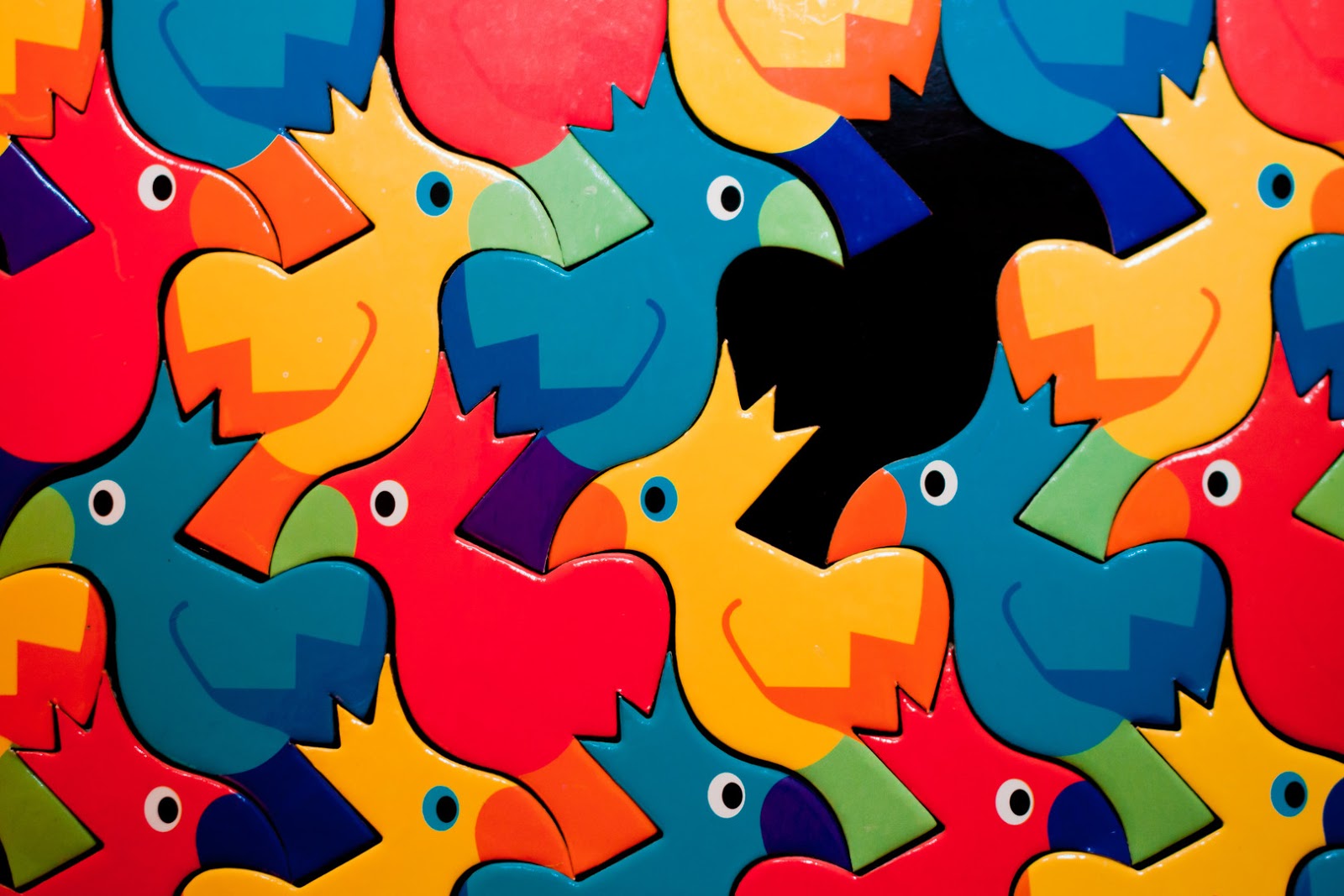

Encourage the kids to experiment with different shapes and perform similar calculations to find whether a particular type of polygon can be used for regular tessellations or not. Conclusion – squares can tessellate a surface uniformly while pentagons cannot. The interior angle is 108° and number of sides meeting at the vertex is 3. On the other hand, for an irregularly tessellated figure, it won’t be so.įor example, in case of a square, the interior angle is 90° and the number of sides meeting at each vertex is 4. For a regular tessellation, the product xy will be 360. Then ask them to measure the interior angle of the polygon used for tiling, say y. Also, after the surface is tessellated, ask the kids to count the number of sides that meet at each vertex in the tessellation, say x. Well, regular shapes like triangles, squares, and hexagons tessellate naturally while irregular shapes have to fit into each other to tile a surface uniformly. With this tessellation art, you’ll be bringing together tessellations and math, as the kids will understand the difference between tiling with regular and irregular shapes. But here, you’ll have to ensure that the shapes complement each other, i.e. Or ask the kids to cut irregular shapes for the tessellations. Cut one for them and then ask the kids to cut multiples. You could vary the activity by cutting out shapes of animals and birds.
Tessellation art plus#
Would you consider it to be the gaps left by the tiled pattern, making this tessellation an semi-regular one? Or would you think of this as a pattern of cross or plus signs fitting into one another, making this a regular tessellation? Observe the white space around each shape. It also led to studies in types of tessellations (regular and semi-regular) and which shapes can be used to make tessellations and how. His work led to further study of tessellations from the mathematical point of view. Federov, a Russian crystallographer proved that tessellation of a plain can be done in any of the 17 groups of isometries. They are closely associated with math and crystallography as well. Tessellations are not limited to just art. Nikolas Schiller is an American map artist known for his kaleidoscopic aerial photography, which can be called an indirect application of tessellations. Examples of tessellations are found in ancient and modern art.Īrtworks of the Dutch graphic artist M.C. Tessellations in the form of tiled walls and flooring are part of ancient architectural styles and designs. The word ‘tessellation’ is derived from the Latin word tessella, which means a small cubical piece of clay, glass, or stone. Each surface of the cube is a regular tessellation of squares. Time to add a design to your shapes.A Rubik’s cube is an interesting example of tessellations. A tessellation made with this technique is called a reflection tessellation. In math, translation means shifting the position of a shape without moving it in any other way.į you want to flip your shape from side A to side B each time you trace it, it will look like a mirror image of the original shape. If you start with side A facing up do you ever have to turn it over to side B to make your tessellation? If you only have to slide the piece without flipping it over or rotating it, then you are making a translation tessellation. Try to cover your whole sheet of paper by tracing the pattern, moving it, then tracing it again. Can you figure out where to place the pattern so that your paper will be covered with repetitions of this shape with no overlaps and no gaps? Pick up your shape and make it fit with the shape you traced like a puzzle. Carefully trace around it using a pencil (you can go back over it with a marker later). Lay your shape anywhere on your clean paper. Psychologists-doctors who study the mind and how we think-are interested in his drawings because the illusions in the works help them study how humans perceive, or view, the world. Remember that cool word? This artist used patterns of shapes that cover an area so that there are no gaps and no overlaps. His repeating patterns illustrate a mathematical idea called tessellation. Escher’s works draw interest from many different people, such as art lovers, mathematicians and even psychologists. He was so inspired by this that he began to included many such patterns in his own works of art! Many of the decorative tiles there were used to make repeating patterns. When he visited cathedrals and grand buildings in southern Spain, he noticed something very interesting to him.
Tessellation art how to#
He went to a school for Architecture and Decorative Arts, where he learned how to draw and use design along with math! When he finished school, he traveled to many counties across Europe.

Maurits Cornelis Escher was born in Leeuwarden, The Netherlands, on June 17, 1898.


 0 kommentar(er)
0 kommentar(er)
